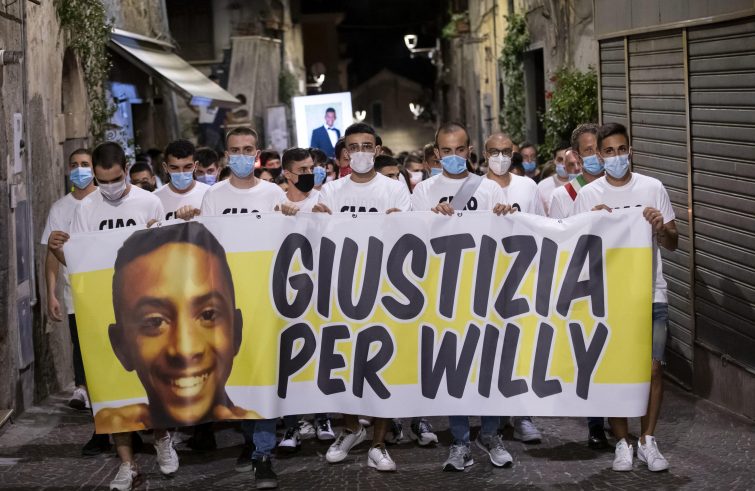
A few days ago, 16-year-old Nathaniel, with Down syndrome, was shot dead in South Africa by the police on his way to buy cookies. Today we learned that in Salt Lake City, capital of Utah (USA), 13-year-old Linden, with autism spectrum disorder, is in critical conditions in hospital after having been shot multiple times by local police called by his mother because the boy, in a crisis, was screaming at the top of his lungs. After repeatedly ordering the teenager to lie down on the ground, police officers opened fire. In Italy, young Willy Monteiro was brutally murdered on Saturday night in Colleferro (Rome). The boy intervened to quell a fight and was killed with kicks and blows by four youths. Three different stories and contexts with one common denominator: vile and senseless violence against three innocent, peaceful and defenseless victims. SIR discussed the issue with Stefano Vicari, head of Children Hospital Child Jesus Neuropsychiatry Unit in Rome.
 “There is a widespread climate of rampant violence” the expert said, adding that the disproportionate use of force by the U.S. police has long been dominating media attention; it is but the last in a long series of incidents.
“There is a widespread climate of rampant violence” the expert said, adding that the disproportionate use of force by the U.S. police has long been dominating media attention; it is but the last in a long series of incidents.
“This senseless violence denotes utter lack of sensitivity and empathy”.
With regard to the Utah episode, he remarked: “We often imagine a person with autism as incapable of relating to others while failing to recognize the extent of lack of empathy in our social contexts”. For Vicari,
“the feelings of violence affecting a large part of the population are partly due to the inability to relate to another person’s emotions; we are no longer educated to understand the feelings of those around us.”
Added to this is the issue of lack of knowledge: “The officers who committed these unprecedented crimes in the U.S. and South Africa probably have no or little knowledge of autism, and perhaps not even of Down syndrome. There are still too many prejudices against disability and mental disorders: many people consider these patients strange, almost monstrous.” According to the psychiatrist, this should lead us to a twofold reflection: “On the one hand law enforcement officers should be trained and qualified to communicate and interact with people with disabilities or mental disorders; on the other we should all ask ourselves if we are being taught tolerance and coexistence with diversity. People with mental disorders account for up to 20% of the overall population. We can’ t pretend they don’t exist, attack them or confine them.”
“The common element that links South Africa, the United States and Colleferro – he went on – is the fear of embracing diversity, expressed in its most extreme and violent manifestations. This is an anthropological question that stands out powerfully in our day and age.” Investigating authorities are suggesting a racial factor in Willy’s murder. “Willy is different, but his diversity does not lie in the colour of his skin, but rather
in the brave and impressive diversity of a defenseless boy who, with unrequested kindness, follows the impulse to help a friend in trouble, without even considering the consequences of his gesture.
This is an element of hope: in the face of the explosion of brutal violence we see the courage of the last.
What saves us from the horror, the element that restores human dignity and humanness is Willy’s gesture: he intervened to help a friend in need without turning a blind eye.”
Both brutality and generosity towards the other, even to the point of sacrificing one’s own life, form part of human nature: Willy shows us that we can believe in the possibility of a different way of relating to one another”.
However, according to Vicari, this incident cannot be classified as a unique, isolated event, confined to that specific context. Unfortunately, such acts of violence are not uncommon and
“we are all somewhat responsible for this.
These thugs were infamously known for their violent behaviour, yet they were free to do as they pleased… Nor are they outcasts living in remote suburbs. Their poverty is not economic, but human and spiritual”.
Why do speak of collective responsibility? ” Because
educating to what is good and beautiful is everyone’s duty:
parents, schools, the Church, associations; educational agencies operating no longer or very little. It is a reminder to rediscover our sense of responsibility and duty, while our world is overly individualistic and prone to claim rights, oblivious to the fact that every right corresponds to a duty. Each one of us has responsibilities towards others: as a civil society we should return to educating our children to genuine relationships based on respect, responsibility, acceptance of others and observance of the rules. Only in this way can we learn to control brutal impulses and reactions.
The absence of positive educational models results in human poverty. Conversely,
a person like Willy, who had positive ideals and values, and did not look the other way before a person in difficulty, testifies to the goodness of a successful educational context (family, parish, associations, in this case Catholic Action).









